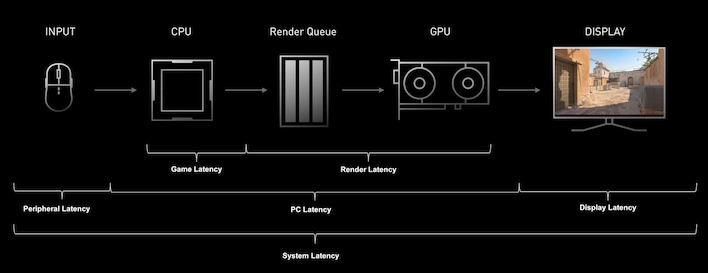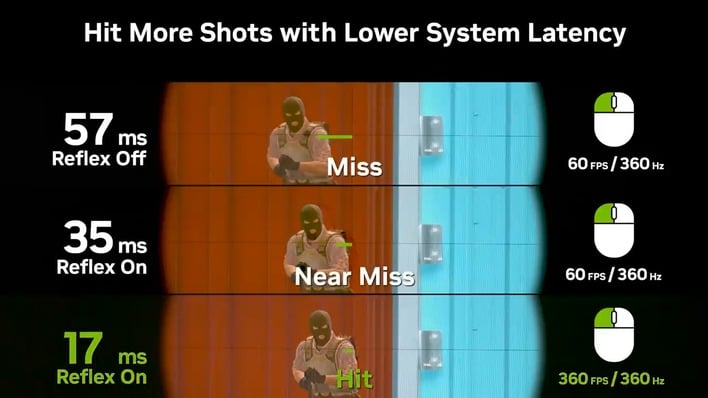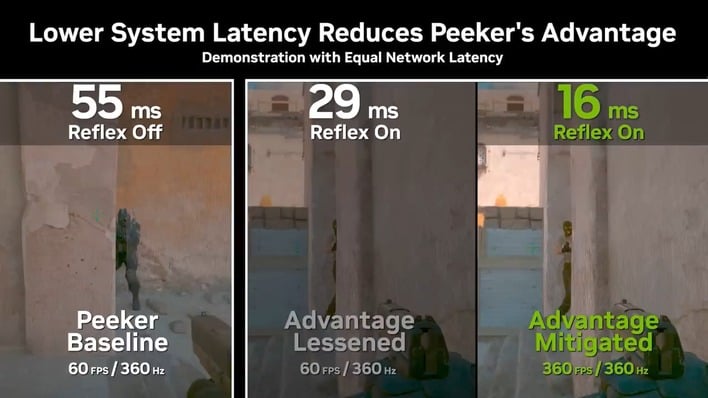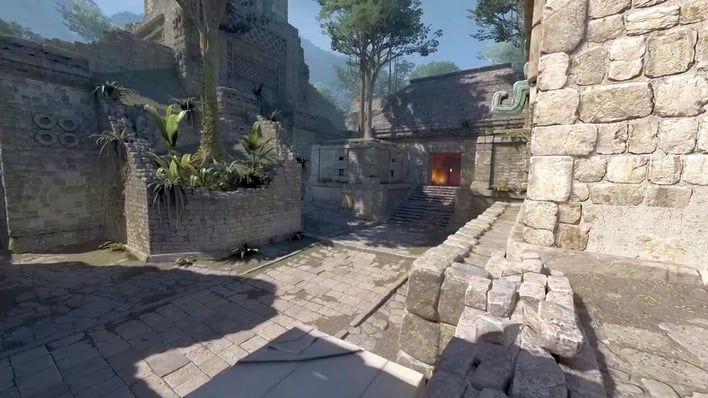NVIDIA Shows GeForce And Reflex Obliterating Counter-Strike 2 Latency
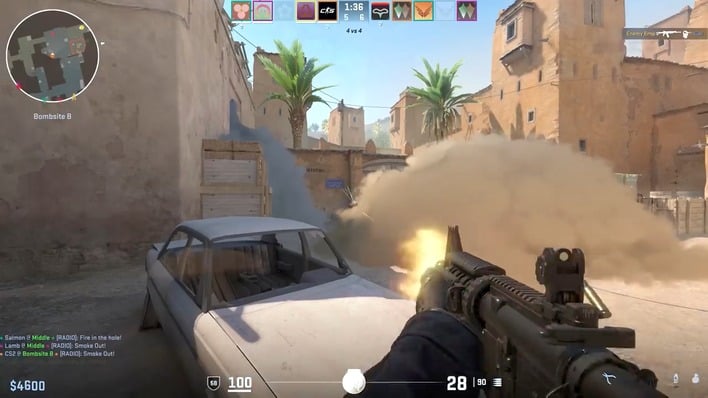
As you'll already know from the headline, we're talking about NVIDIA's Reflex. It's a small suite of changes that developers can implement to adjust the way the game handles the relationship between input and rendering with the ultimate goal of significantly reducing final input lag. Reflex, particularly its enhanced "Boost" mode, can slightly reduce the framerate of a game, but this trade-off is usually worth it for competitive gamers.
Image: NVIDIA
There are many factors that go into what we call "input lag," including your display's response time (not just panel pixel response), your peripheral latency, the game's own built-in lag, and the render latency. All of these combined add up to your "system latency", and according to NVIDIA, Reflex alone can reduce that value by as much as 35%. In other words, it's not going to do anything for your network latency, or "ping"; that's not what this is about. Instead, this is about reducing the time between when you press a key or click a mouse button and when the game actually registers your actions.
According to NVIDIA, the reduction in input lag from Reflex is enough that it could make a difference in your gameplay. Some of these claims are fair enough; by reducing input latency from 57ms to 17ms, you are seeing the state of the game more than two frames faster at 60 FPS, which is a real benefit—although that comparison requires that you also upgrade to a 360-Hz monitor.
Slightly more dubious is the idea that Reflex could help overcome what is known as Peeker's Advantage. Put simply, Peeker's Advantage refers to the fact that network latency means an aggressive player will have an advantage over a more passive player because of the way game netcode is written; aggressive players that "peek" around corners will see enemies holding position before those enemies see them. NVIDIA claims that with Reflex and a 360-Hz monitor (as well as a frame-rate to match), you can mitigate the effects of Peeker's Advantage.
That's probably true to some degree if your enemy doesn't have the same benefits, but then, similar remarks could be said for higher-resolution displays, superior input devices, and simply higher frame rates in general. In other words, better gear can give you a (small) advantage in any sport, whether physical or electronic.
The bottom line is that NVIDIA Reflex is a competitive advantage for NVIDIA in Counter-Strike 2, and serious CS2 players will probably want to have a GeForce GPU to use it. AMD does have a competing technology, called "Anti-Lag+", but like Reflex, it requires game-specific support. You can enable the original Radeon Anti-Lag in the game-specific settings in your AMD Adrenalin software, though. We couldn't say whether it has the same level of benefit as Reflex, but given the latter's deep game integration, we suspect probably not. Still, Radeon Anti-Lag does reduce input latency, and in this case, less is better than more.
Let us know if you're interested in seeing us perform input lag testing on CS 2 in the comments below.

